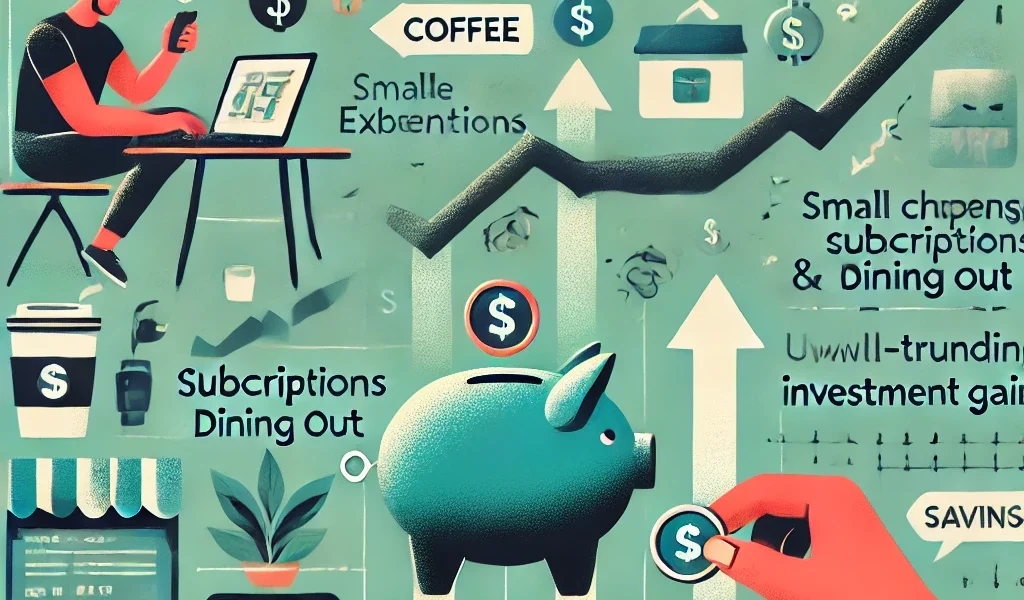In the journey to financial success, small, consistent changes can lead to significant long-term rewards. This concept lies at the heart of micro-budgeting—a strategy where minor adjustments to daily spending habits unlock greater investment potential. While traditional budgeting focuses on large expenses, micro-budgeting sharpens your focus on small, often overlooked spending patterns. By redirecting these small savings into investments, you can harness the power of compound growth and work toward financial freedom.
In this guide, we’ll explore the benefits of micro-budgeting, actionable tips to implement it effectively, and how these small changes can translate into substantial investment gains.
What is Micro-Budgeting?
Micro-budgeting involves tracking and optimizing small, recurring expenses that can accumulate over time. Unlike conventional budgeting, which emphasizes major categories like rent or utilities, micro-budgeting digs deeper into daily discretionary spending.
For example:
- Cutting back $3 on daily coffee translates to $90 monthly or $1,080 annually.
- Reducing a $15 streaming subscription adds $180 yearly to your investment fund.
By capturing these savings and investing them wisely, you can accelerate your financial growth.
Why Micro-Budgeting Works for Investors
Micro-budgeting offers several unique advantages for investors looking to grow their capital:
- Consistency Builds Wealth: Small, steady contributions compound over time, leading to exponential growth.
- Identifies Hidden Leaks: Micro-budgeting reveals overlooked expenses that can be redirected toward investment.
- Promotes Financial Discipline: It encourages mindful spending and better financial habits.
- Boosts Investment Capital: Every dollar saved is an opportunity for further investment.
Step-by-Step Guide to Implementing Micro-Budgeting
1. Track Every Dollar
Start by meticulously tracking all your expenses for at least one month. Use budgeting apps like Mint, YNAB (You Need a Budget), or PocketGuard to record even the smallest transactions.
Key Areas to Monitor:
- Daily purchases (e.g., coffee, snacks)
- Subscriptions and memberships
- Impulse buys
- ATM fees and bank charges
Pro Tip: Automate your expense tracking to identify patterns effortlessly.
2. Identify Micro-Savings Opportunities
Once you track your expenses, identify areas where you can reduce spending without sacrificing quality of life.
Common Micro-Savings Areas:
- Dining Out: Pack homemade lunches instead of buying daily.
- Utilities: Use energy-efficient appliances and unplug unused electronics.
- Transportation: Opt for public transit or carpooling.
- Entertainment: Share subscriptions or use free alternatives (e.g., public libraries).
Example: Reducing weekly takeout by $20 yields $1,040 annually.
3. Automate Your Micro-Savings
Set up automated transfers from your checking account to your investment account. Even small, consistent deposits can add up over time.
Micro-Investing Platforms:
- Acorns: Rounds up purchases and invests the spare change.
- Robinhood: Offers commission-free trading with no minimum.
- Stash: Allows micro-investing with as little as $5.
Pro Tip: Automate recurring micro-savings from everyday purchases.
4. Adopt the “No-Spend” Challenge
Commit to a no-spend day, week, or month where you avoid unnecessary purchases. This disciplined approach reveals how much you can save when you cut back on non-essentials.
How to Start:
- Choose a realistic timeframe.
- Identify must-have expenses and discretionary spending.
- Redirect the savings toward your investment portfolio.
Example: A 7-day no-spend challenge could free up $100 for investments.
5. Leverage Cash-Back Rewards
Use credit cards with cash-back programs and redirect those rewards into your investment account.
Top Cash-Back Cards:
- Chase Freedom Flex: Offers 5% cash back on rotating categories.
- Discover It: Matches all cash back earned in your first year.
Pro Tip: Treat cash-back earnings as “free money” for investments.
6. Optimize Lifestyle Inflation
When you receive raises or bonuses, avoid lifestyle inflation. Instead of upgrading your lifestyle, channel these extra funds into your investment accounts.
Example: A $2,000 annual raise invested at an 8% return could grow to over $31,000 in 10 years.
The Compound Effect of Micro-Budgeting
Small savings can yield big results when invested consistently. Here’s a breakdown of how micro-savings grow over time:
| Monthly Micro-Savings | Annual Investment | 10-Year Growth (8% Annual Return) |
|---|---|---|
| $50 | $600 | $8,680 |
| $100 | $1,200 | $17,360 |
| $250 | $3,000 | $43,400 |
Pro Tip: Reinvest dividends to accelerate compound growth.
Mistakes to Avoid in Micro-Budgeting
- Neglecting Small Expenses: Minor costs add up over time and limit investment potential.
- Failing to Automate Savings: Without automation, it’s easy to spend your savings elsewhere.
- Over-Cutting: Avoid cutting essentials; focus on wasteful spending instead.
- Skipping Reviews: Regularly audit expenses to find new savings opportunities.
How Micro-Budgeting Accelerates Financial Independence
By controlling small expenses and investing the savings, you shorten your path to financial independence. Each dollar saved and invested brings you closer to achieving long-term goals like early retirement, homeownership, or financial security.
Example Strategy:
- Save $150 monthly through micro-budgeting.
- Invest it at an 8% annual return.
- In 20 years, you will have over $88,000—from small lifestyle changes alone.
Conclusion: Small Changes, Big Gains
Micro-budgeting empowers you to take control of your financial future. By identifying and optimizing small expenses, you free up capital that can be invested for substantial long-term gains. Start small, stay consistent, and watch as your micro-savings transform into meaningful wealth.
Take Action Today:
- Begin tracking your micro-expenses.
- Identify areas to save.
- Automate micro-investments.
Embrace the power of micro-budgeting—because even the smallest changes can lead to life-changing financial outcomes.




